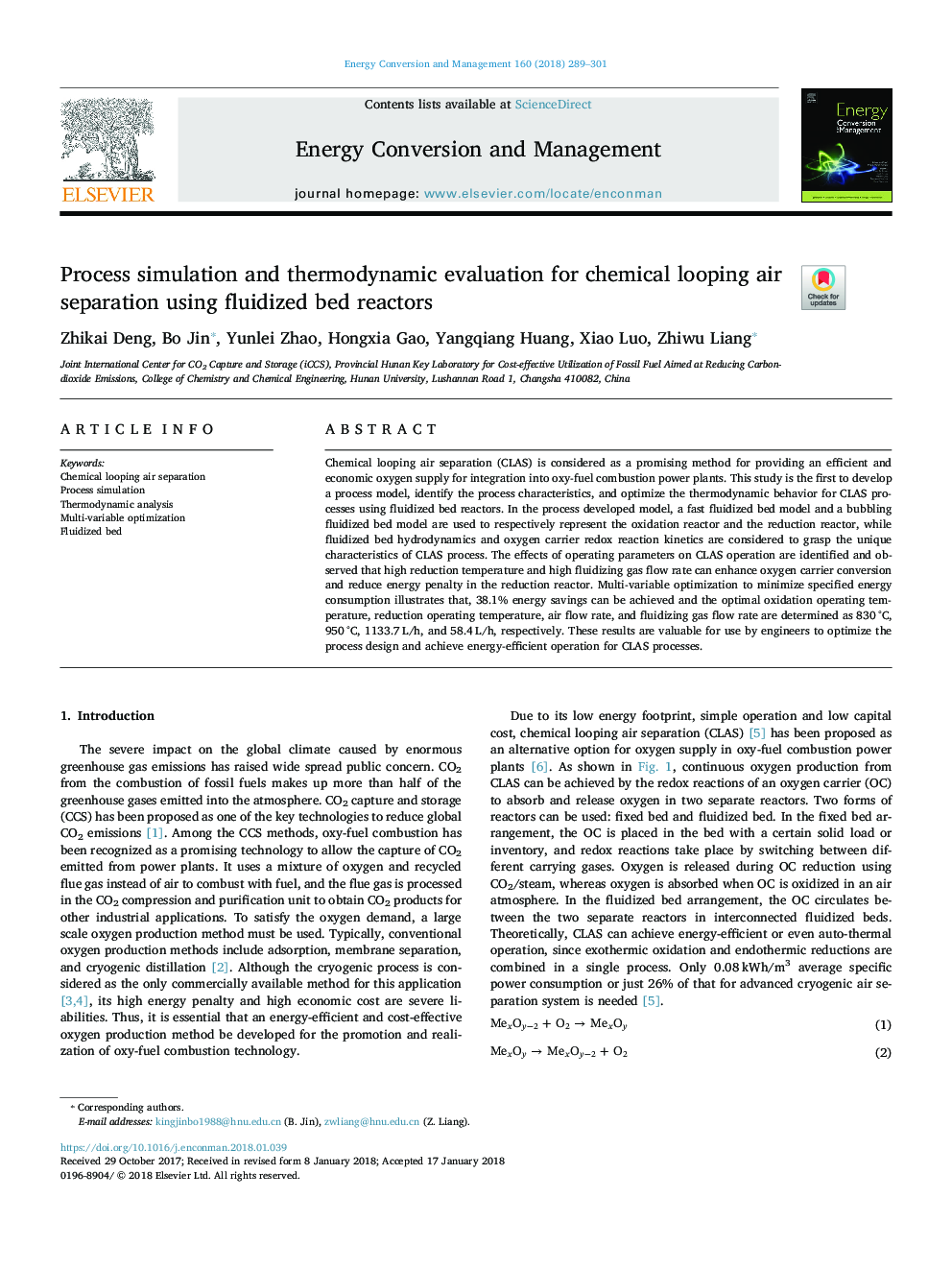| Article ID | Journal | Published Year | Pages | File Type |
|---|---|---|---|---|
| 7158969 | Energy Conversion and Management | 2018 | 13 Pages |
Abstract
Chemical looping air separation (CLAS) is considered as a promising method for providing an efficient and economic oxygen supply for integration into oxy-fuel combustion power plants. This study is the first to develop a process model, identify the process characteristics, and optimize the thermodynamic behavior for CLAS processes using fluidized bed reactors. In the process developed model, a fast fluidized bed model and a bubbling fluidized bed model are used to respectively represent the oxidation reactor and the reduction reactor, while fluidized bed hydrodynamics and oxygen carrier redox reaction kinetics are considered to grasp the unique characteristics of CLAS process. The effects of operating parameters on CLAS operation are identified and observed that high reduction temperature and high fluidizing gas flow rate can enhance oxygen carrier conversion and reduce energy penalty in the reduction reactor. Multi-variable optimization to minimize specified energy consumption illustrates that, 38.1% energy savings can be achieved and the optimal oxidation operating temperature, reduction operating temperature, air flow rate, and fluidizing gas flow rate are determined as 830â¯Â°C, 950â¯Â°C, 1133.7â¯L/h, and 58.4â¯L/h, respectively. These results are valuable for use by engineers to optimize the process design and achieve energy-efficient operation for CLAS processes.
Keywords
Related Topics
Physical Sciences and Engineering
Energy
Energy (General)
Authors
Zhikai Deng, Bo Jin, Yunlei Zhao, Hongxia Gao, Yangqiang Huang, Xiao Luo, Zhiwu Liang,
